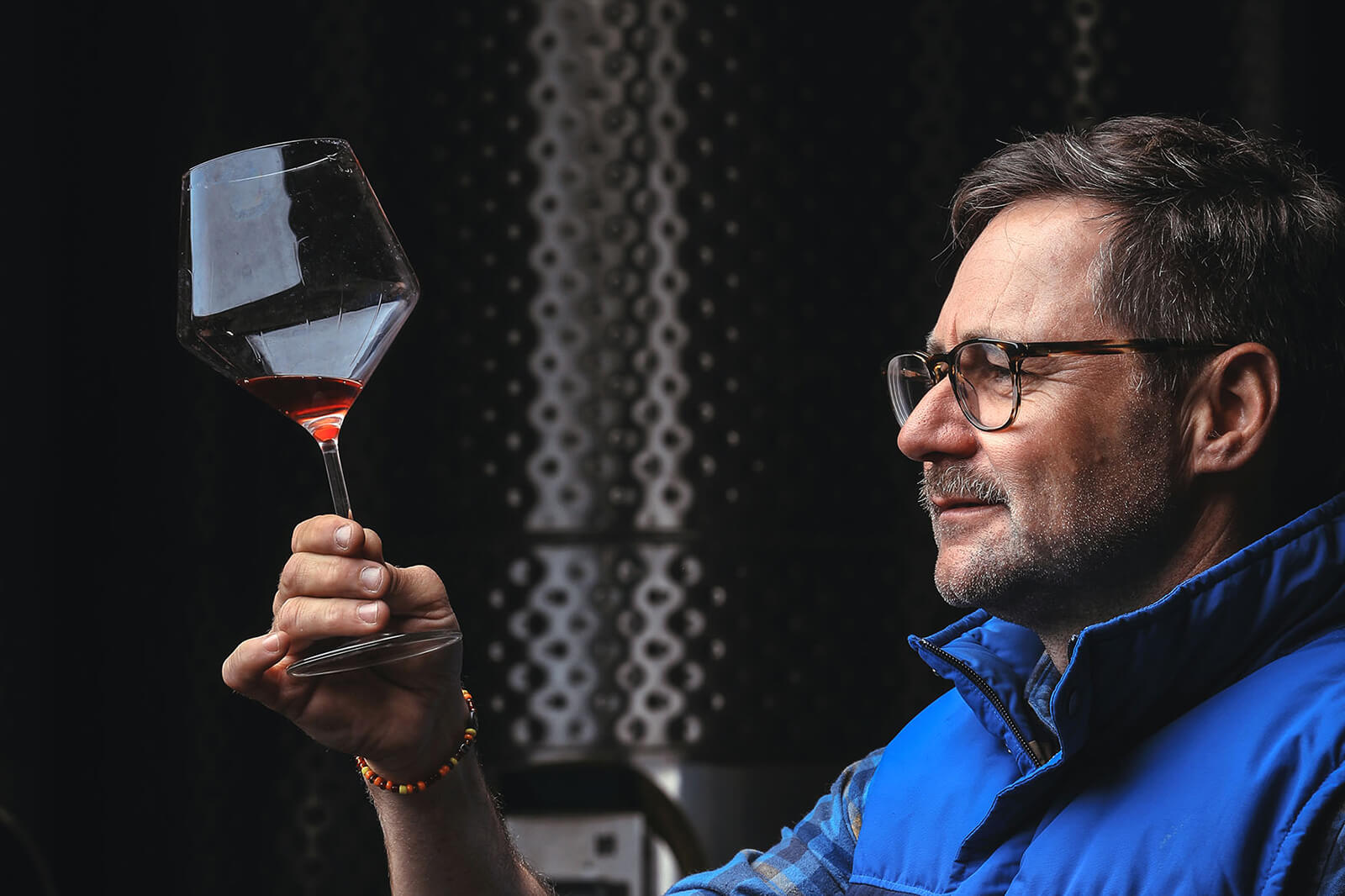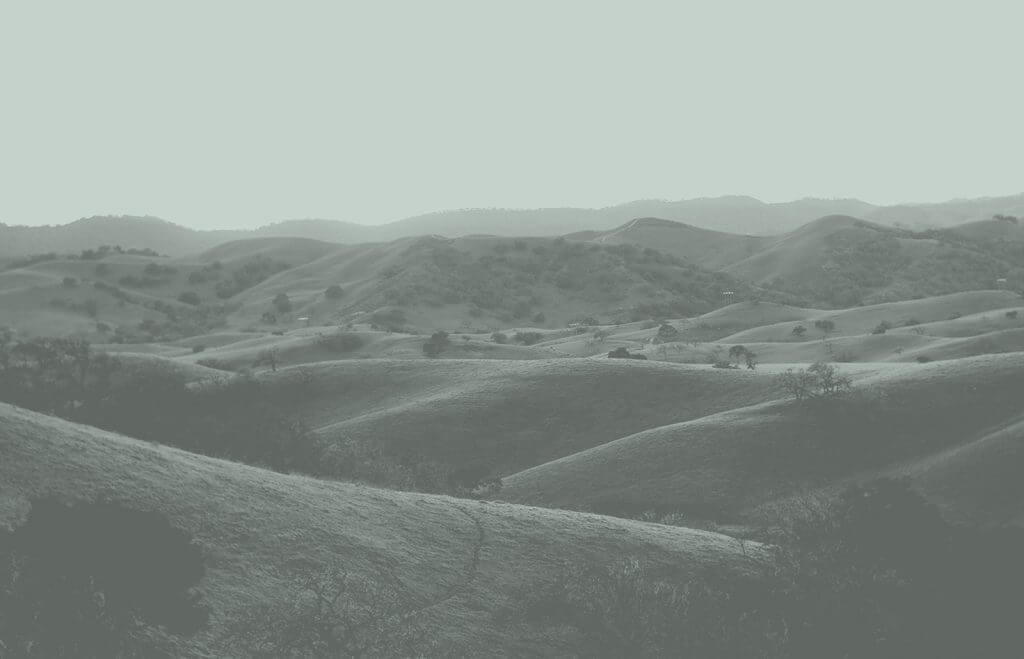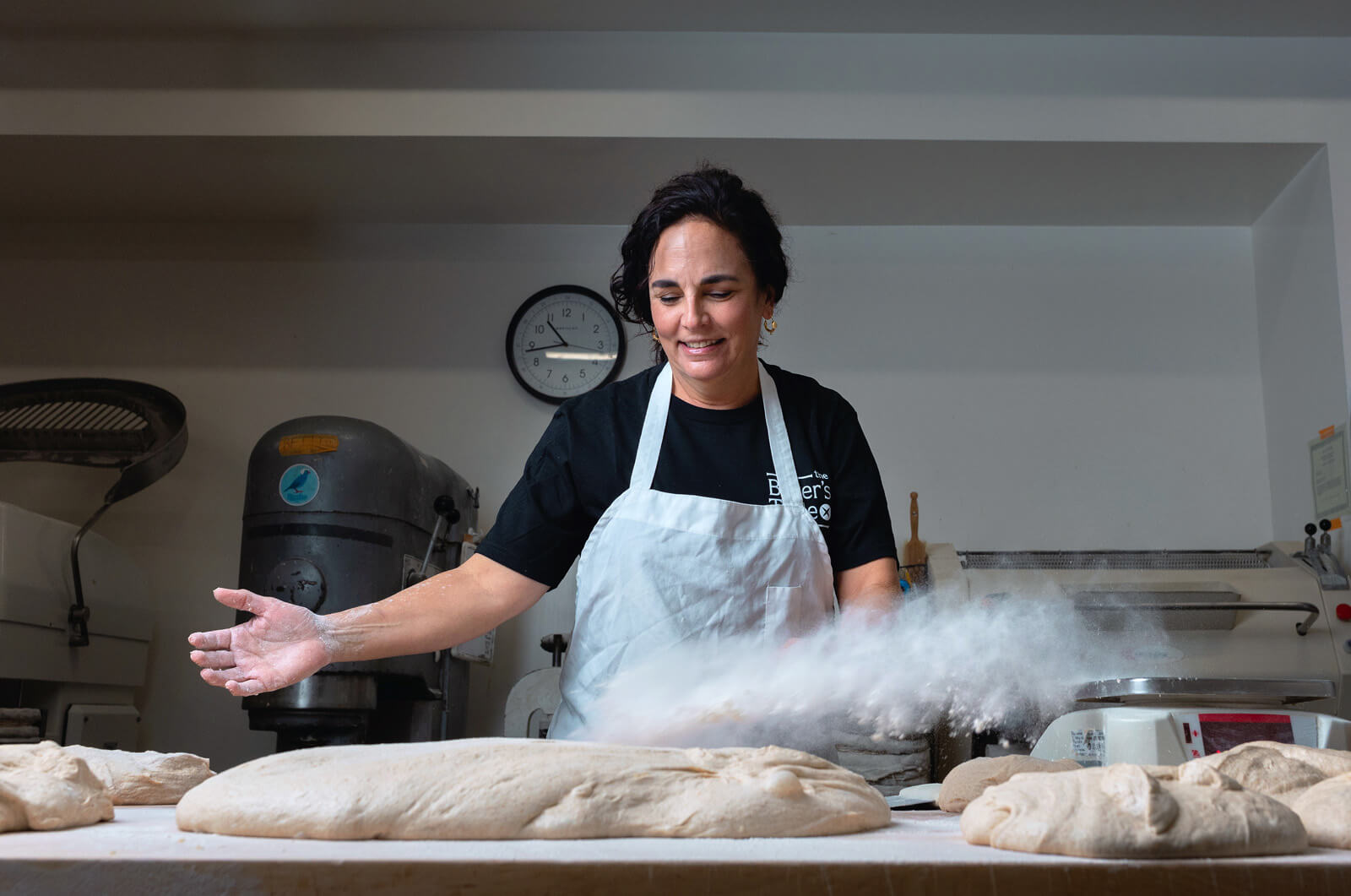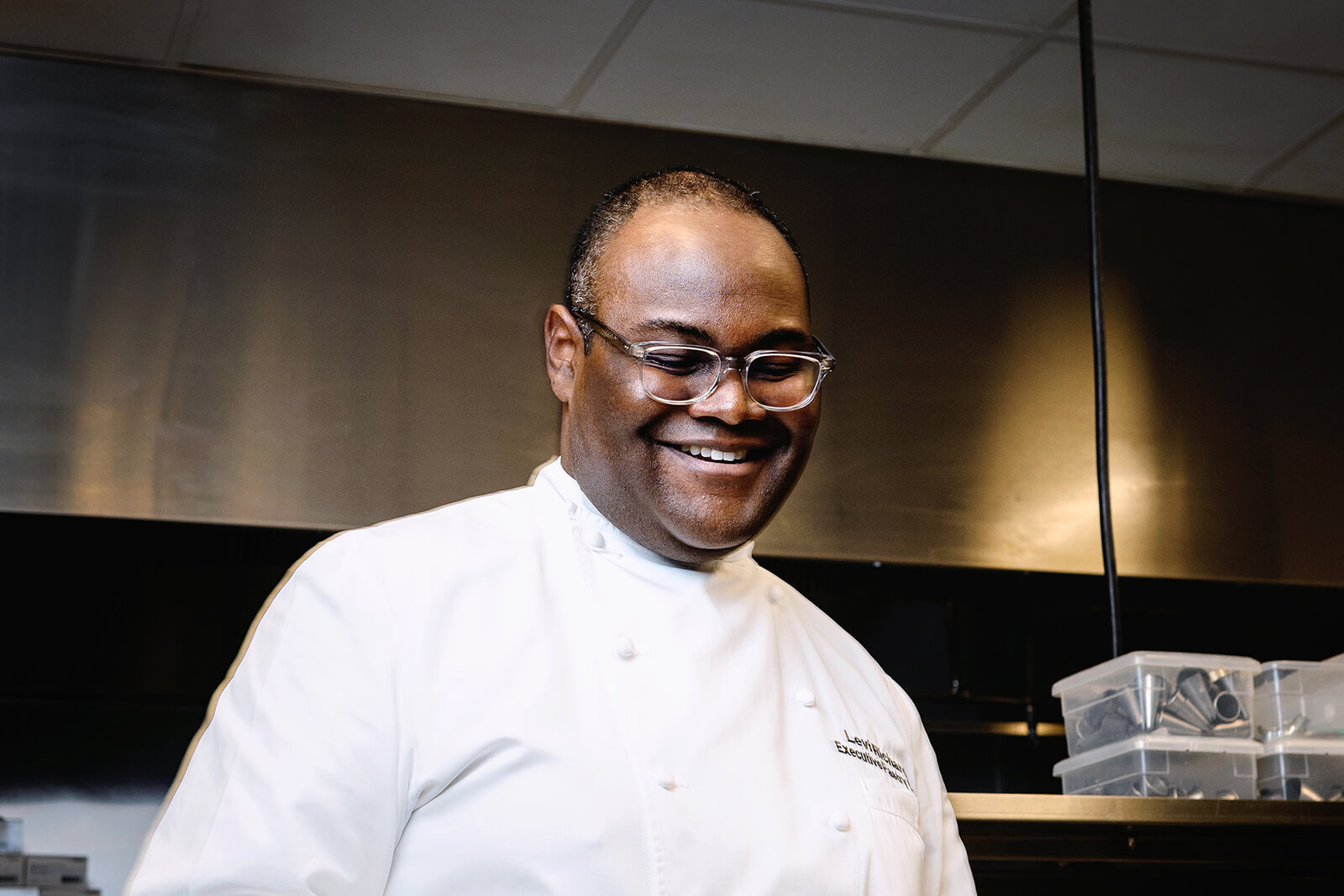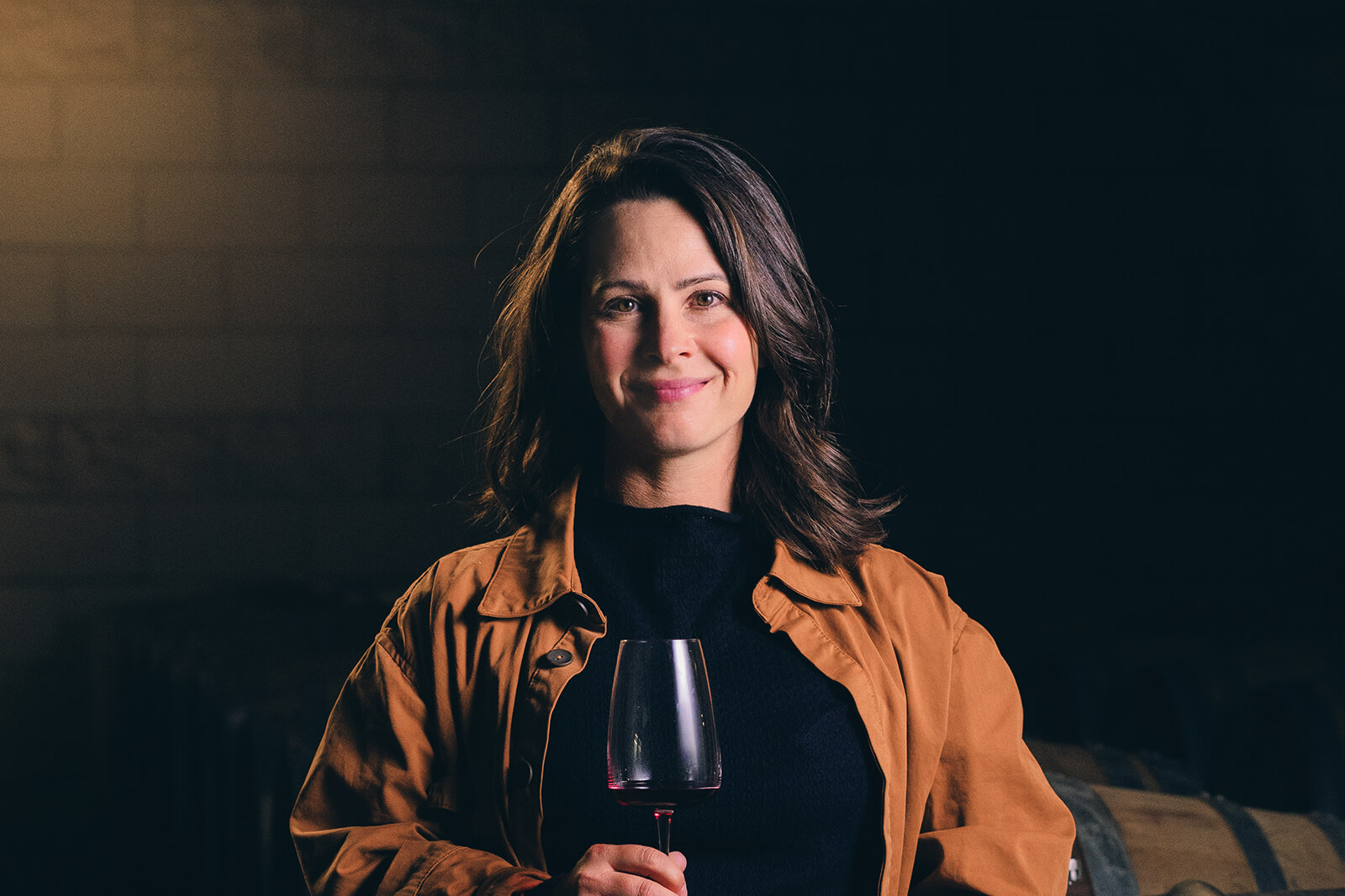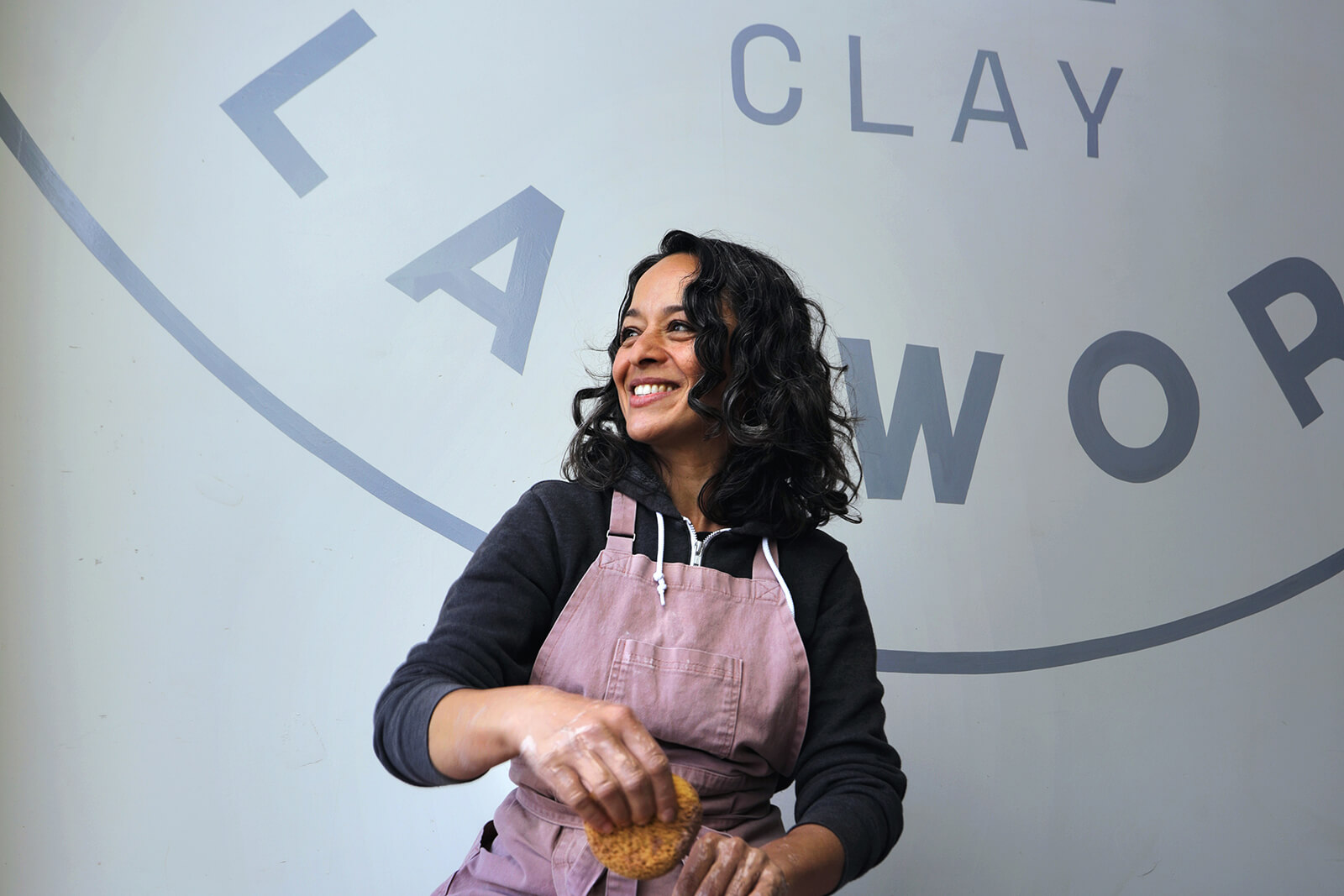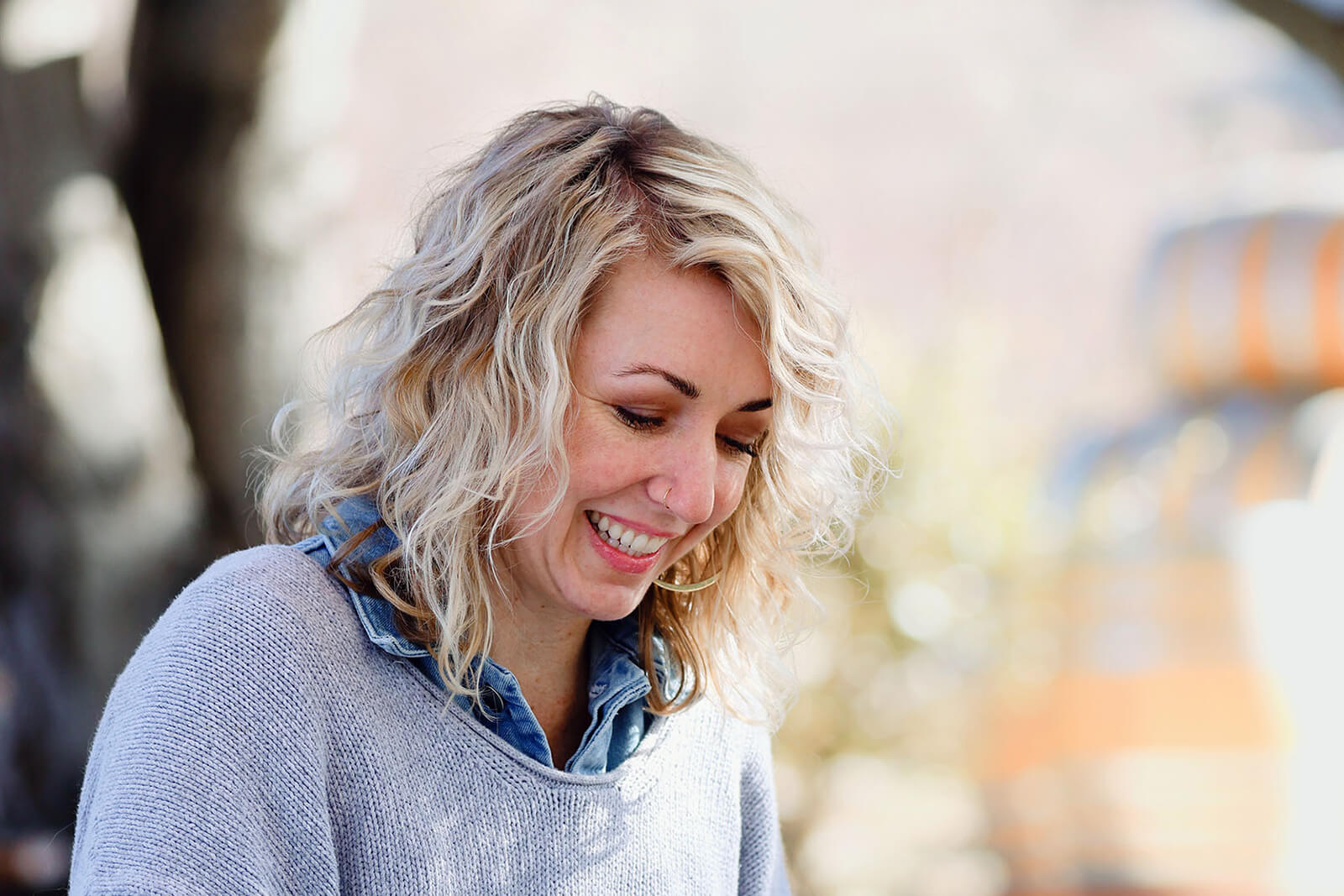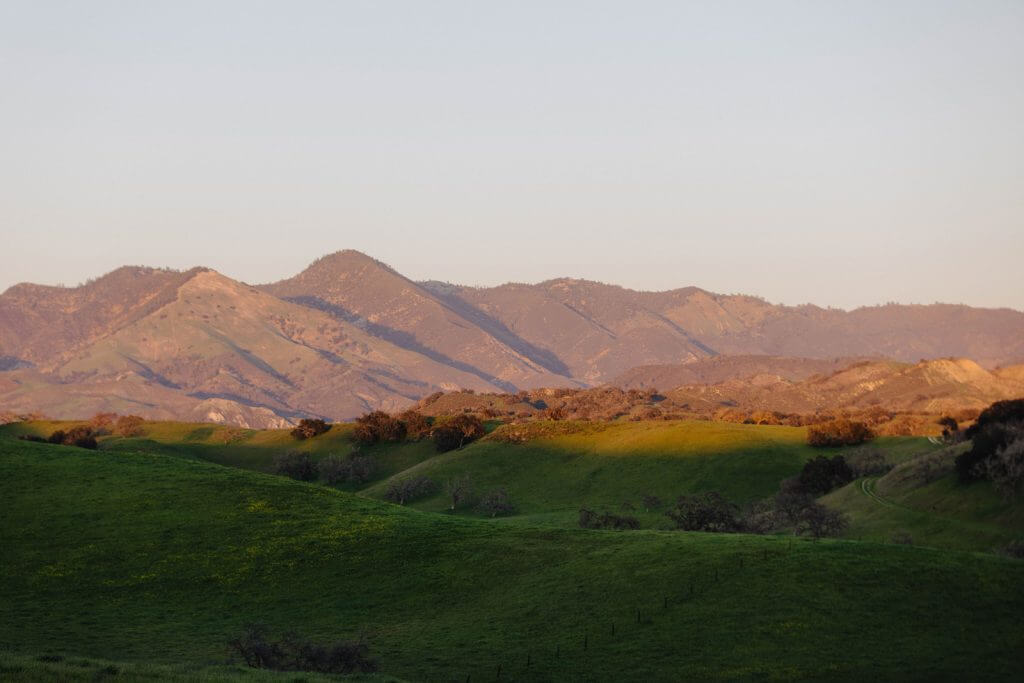Learn the Art of Their Craft
Meet SYV Maker, Ernst Storm
Maker Ernst Storm grew up in South Africa, spending much of his childhood outdoors, especially on his sister’s farm, where he developed a deep appreciation for nature. His family later moved to the Western Cape where Ernst spent his teenage years surrounded by vineyards. His travels through Europe after graduation prompted him to enroll in Agricultural School to study viticulture and enology. Despite challenges in securing a spot in the prestigious cellar/technology program, he’s one of the few graduates in his class still making wine today. His global experiences shaped his winemaking philosophy and nurtured a love for classically made wines. We sat down with Ernst to learn more about his journey and his winemaking style.
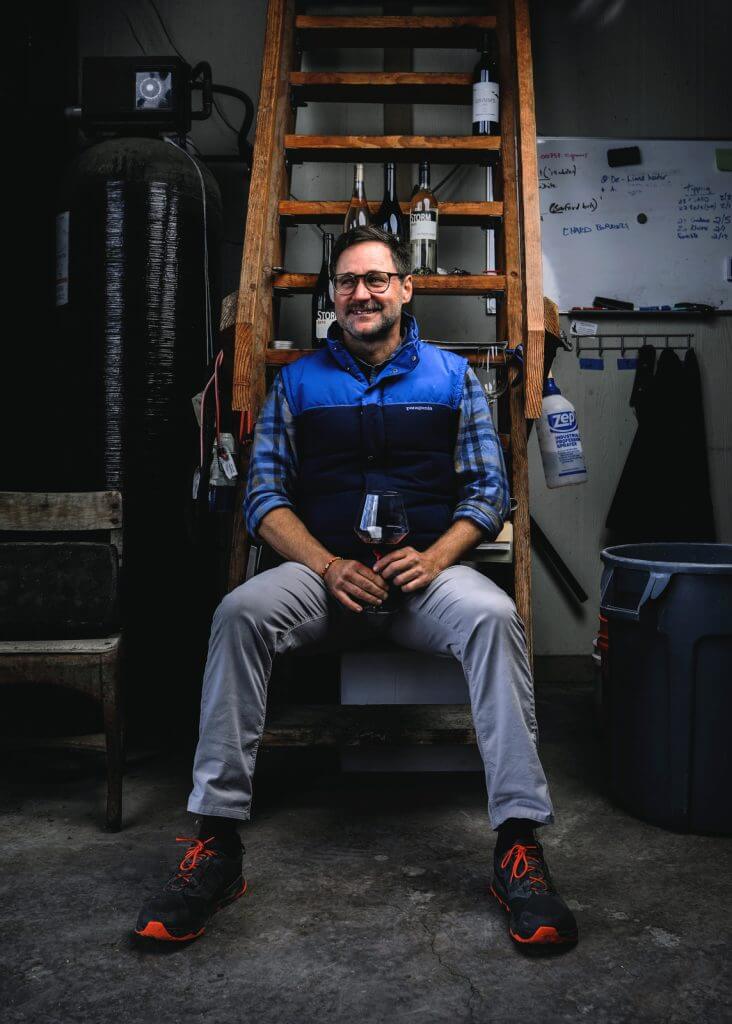
What brought you to the Santa Ynez Valley?
Ernst: I was 23 and working in the Stellenbosch area [in South Africa], but I wasn’t ready to settle down. Friends lined me up with a job in the Sierra Foothills for a year. It was a little warmer and I learned about the challenges of higher pH and riper wines. But I longed to be closer to the ocean in an area where I could make Pinot Noir and Sauvignon Blanc in a more classic style. The only person I knew in the area was Jim Clendenden [the late founder/winemaker of Au Bon Climat].
It was 2004 and Jim told me, ‘If you want to get down here, you need to get your foot in the door at a big winery.’ So I became the assistant winemaker at Firestone. There, I experimented a lot with Sauvignon Blanc, learning the subtleties between pick dates, canopy management, fermentation temperatures, and reductive winemaking. Those little things make a huge difference.
I started my brand in 2006 at the Firestone Winery. So, I let my employees make wine too since that’s how I started. Having the help to get off the ground and put money back into fruit, equipment, and things like that was a huge help.
You talk a lot about a “classic style” of winemaking. What exactly does that mean?
Ernst: In the beginning, I thought of Pinot Noir as strawberry juice. My brother and I are both Pinot Noir producers now, but we thought it was flimsy and not much to it. But as your palate develops, you start to notice those interesting nuances and layers. That’s what it’s all about. Drinking older wines from South Africa, drinking Burgundy, and being exposed to those kinds of wines opened my eyes to the style of wine I want to make and drink because they tell a story.
I feel like making wines in a classic style, you manipulate less, and then the story is truer to where it’s from. And I like to see the evolution in the bottle year after year, I like to see how it changes. To me, that’s what draws people to Burgundy and the old world is seeing how these wines taste in 10 or 20 years. And I feel like our area has the potential to do that too.
Pinot Noir is one of those grapes that tells a story, if you can call it that, better than any other grape. There’s a perfect site, a perfect climate, everything has to line up with Pinot Noir to create a perfect snapshot of each year.
You’re known for both Pinot Noir and Sauvignon Blanc. How would you compare your approach to making those distinctly different wines?
Ernst: With Pinot Noir, it’s a less is more approach. If you’ve got a great vineyard, a great site, a good vintage, and we follow some simple winemaking, it’s going to be good.
Sauvignon Blanc on the other hand, is more of a winemaker’s wine in my mind depending on the style you want. You have to understand the chemistry and how the things you do in the winery affect the chemistry profiles. Sauvignon Blanc can oxidize quickly. It’s more of a winemaking wine where you need to be smart about your choices.
As a winemaker, what is it about this area that you think is primed for great potential?
Ernst: On a global scale, our proximity to the ocean, that big nighttime to daytime shift in temperature just enables us to make a lot of different varietals and to make very classic wines that can compete with the best in the world.
Our philosophy is working with specific vineyards long term so we can build a track record and the winemaking becomes more intuitive. So, if you’ve got 10 vintages, each vintage tells a different story — the weather is different, the climate, the yields are different, the sites, the blocks, they’re all different. And the way we try to make wine, especially with Pinot Noir, is to have a clear picture of every vintage.
As far as the people go, it’s a pretty special place. Everybody’s always willing to help you out, so if you build a little support group around you, it’s pretty cool. There’s a mutual learning experience going on.
Do you have any words of wisdom for someone who might want to make their own wine or start a brand?
Ernst: Start small and let the growth be organic. Think long term — take the time to find the vineyards that you really love and can walk a long path with. And don’t make more wine than you can sell in 12 months, that’s the key.
I started selling my wine basically out of the back of my car. I started building up a little network locally and I still sell to those restaurants. I like doing things long-term so it’s important to have long-term relationships with your customers, your growers and everybody involved in the business. And so slowly, organically it just grew.
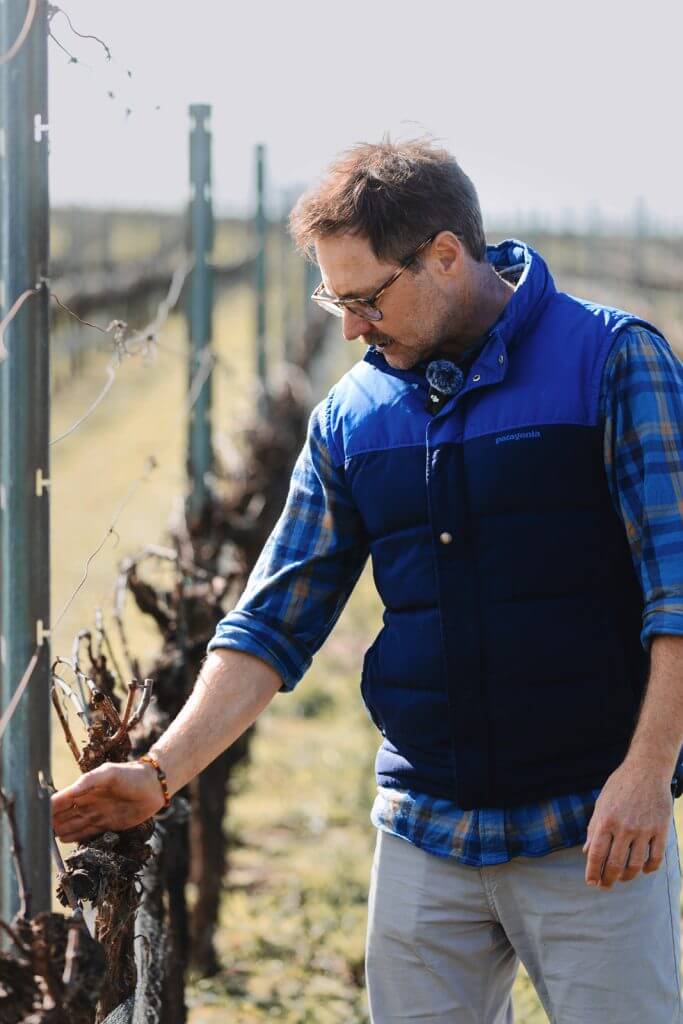
Your label has become a family affair, with your wife and kids all involved. How did that come to be?
Ernst: When the kids were in daycare they would come home with stacks of art. I always thought it was such a waste if we just put these away. So, I thought, what if we take the really good ones and put them on a bottle, that’d be great. And that’ll be a great story for them to tell.
My little guy is 6 and he thinks it’s his wine: the Sauvignon Blanc, the Kingsley. People come to the tasting room and he’ll be like, ‘oh, it’s my wine.’
I think it’s important for them to be part of it from the beginning. I’m trying to teach them about acid and how things work. They’re very intuitive about it and really want to learn.
Elsa threw paint down so it’s these spotted things and I felt like the Cab Franc, the rusticity of that wine, it really comes through. Owen was more just ink and paint flowing like the clouds, the earth, the mountains, like everything coming together. So you know, the labels do kind of work, for sure.
I think, being a parent, you kind of realize that it’s not all about wine. There are other things that are more important. It’s calmed me down a lot. You know, you don’t get stressed about scores or what people think because there are other things that are way more important. Having children and having a solid foundation with your family, I think, that’s key.
You make wines for some other well-respected labels in the Santa Ynez Valley, including Grimm’s Bluff and the newly opened Donnachadh. How do you differentiate other labels from your own? Or put another way, how do you tell their story authentically and separately from your own?
Ernst: I took those projects on because I knew they were very different [from Storm] and they were their own sites.
Donnachadh is an organic vineyard in the Sta. Rita Hills which I’ve been involved in since we planted it. So it’s learning from one vineyard as you go and you’re trying to make wines just from that site.
Same thing with Grimms Bluff, but it’s the total opposite [growing region]. It’s in Happy Canyon — it’s a biodynamic vineyard with Cabernet [Sauvignon] and Sauvignon Blanc.
So, I felt like the two [projects] would be great opportunities to do something very different and to learn from them at the same time. I really get along with both owners, we’re friends, and it’s two amazing properties that can tell their own stories different from Storm where we source fruit from different vineyards.
What’s your approach to pairing wine with food and do you have any favorite examples?
Ernst: I think wine and food go hand in hand. Food is all about flavors and the experience and I think the combination of the two is a no-brainer. We try to make these wines and promote them as wines that go with food. So, I think it’s key to bring those things together. I love everything about the wine business because it’s so tied to the food industry — restaurants and the people you meet. It brings people together.
We make a Sauvignon Blanc for Bar le Cote [in Los Olivos] and I think a lot of the crudo and raw options go really well with this wine because we blend it with the intention to have a lot of minerality, fruit and structure. The Sauvignon Blanc is always slightly more herbaceous too and I think that herbaceous tightness really pairs well with the raw fish and oysters.
Do you anticipate any changing trends in the future when it comes to wines and winemaking?
Ernst: Santa Barbara County, especially Santa Maria Valley and the closer you are to the ocean, we’re sitting in this area of opportunity where we’re less affected by climate change so we’re going to be able to make our wines more consistently, whereas more continental climates are feeling climate change a lot harder.
We sell a lot of wine in Scandinavia and so do a lot of wineries in the area. But that’s only been happening in the last five years and it’s because of where we are. We’re able to make Pinot Noir and Chardonnay that rival Burgundy.
We do see fluctuation but we’re still able to pick, we’re still able to make classic wines. Whereas in Burgundy, some of these vintages, they’re forced to make really big wines and they don’t know how to deal with it because they’ve never had to deal with it. So, we’re lucky in that sense. And if you compare our wines from this area to their wines blind, you can’t tell the difference. So together, we need to raise the bar, to be consistent and to stick with it. We’re in the driver’s seat, no doubt.
Do you think there is something that ties all Makers together?
Ernst: I think what brings makers together is the fact that they’re all artists. You’re either an artist or you’re not. You either get it, or you don’t.
I think that’s what brings makers together: artistry. Wine is my canvas, and I try to tell the story through that. And knowing that it’s a business too, you have to bring those two together.
